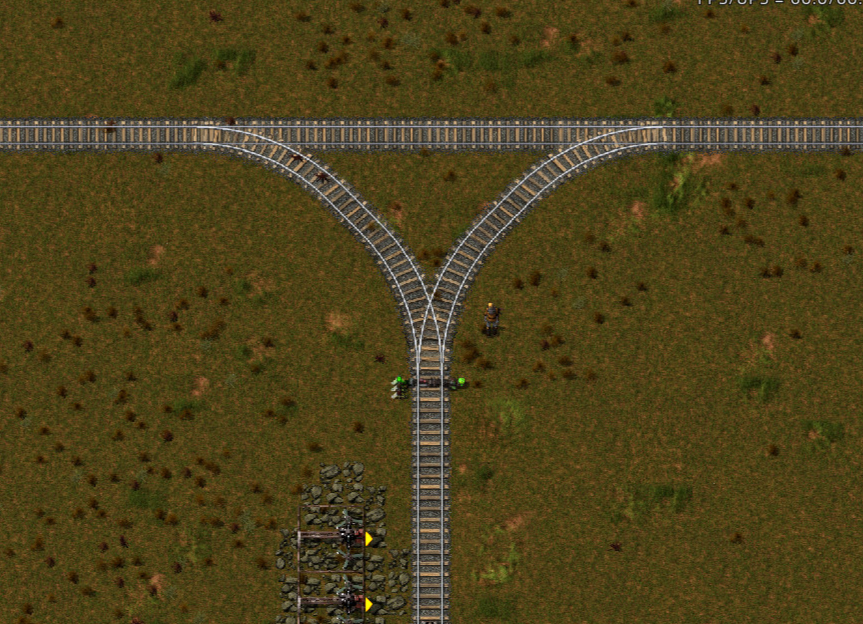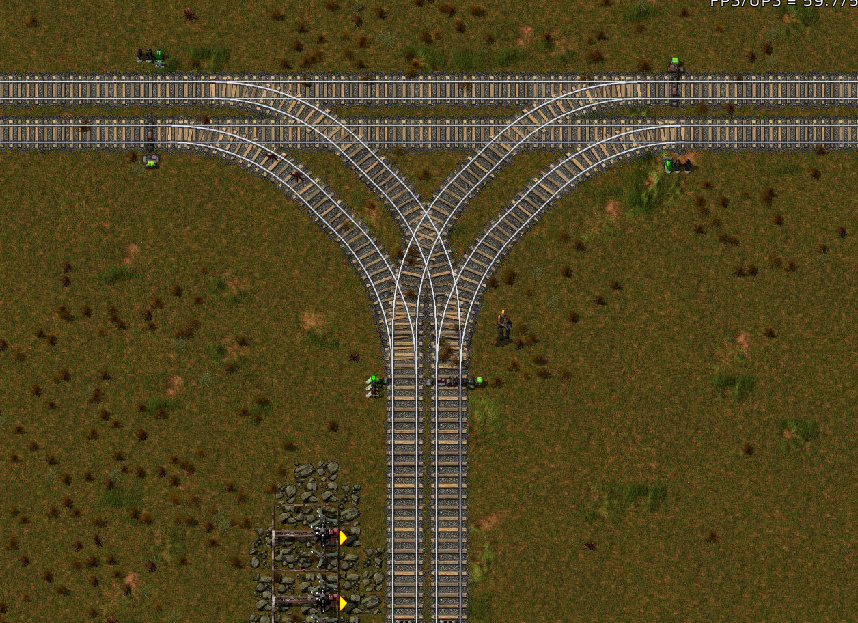Yes, I agree with Deadly Bagel and his examples are excellent, however he might have given the impression that you need double tracks, but this also works for a single track setup. Single tracks are just a lot less forgiving and flexible when working with multiple trains. Luckily a single track setup can be adjusted to a double track setup at any time. You probably want to do that for busy sections first.
So, as Bagel pointed out, you want to use a main line that stretches through your landscape (preferably a double line, but you can also start with a single one) and from that main line you create side lines that connect to your (mining) stations. This is where the junctions come in that Bagel posted. Side-lines always connect to your main line in both directions, so trains can chose the path they want. (Your side lines don't do that)
Signals divide your rail tracks into segments, or blocks.
Simply put: A regular rail signal looks at the block ahead. If it's occupied, it will turn red.
A chain signal however, looks at the Signal ahead, and copies the state of that signal.
Therefor it's good practice to use a chain signal in front of a junction and a regular signal after that junction. This keeps your junctions clear from waiting trains that block others. (If I'm correct, Bagel's examples are that of a 'British traffic direction'. So, his trains travel 'on the left side' and his signals are placed accordingly).
Now, if your main line is a single line and therefor has traffic in both directions this works a bit different. In that case you need to keep your entire main line a single block. Which means that your signals will only be placed on the side lines' side of a junction. So, the main line does not have signals, but immediately after a junction, the side line will have two signals: A regular one for the direction heading away from the main line, and opposite of that, a chain signal for the direction heading onto the main line. Only one train at a time will be able to enter the main line, which results in them waiting for each other at their 'exits'. That means you will soon need to start including parking areas where trains can wait to let others pass, so you probably want to create a double track main line asap. - Btw, If you have your trains drive 'on the right side', you don't need space in between your double tracks for placing signals.
I hope that helped.

- Edit -


